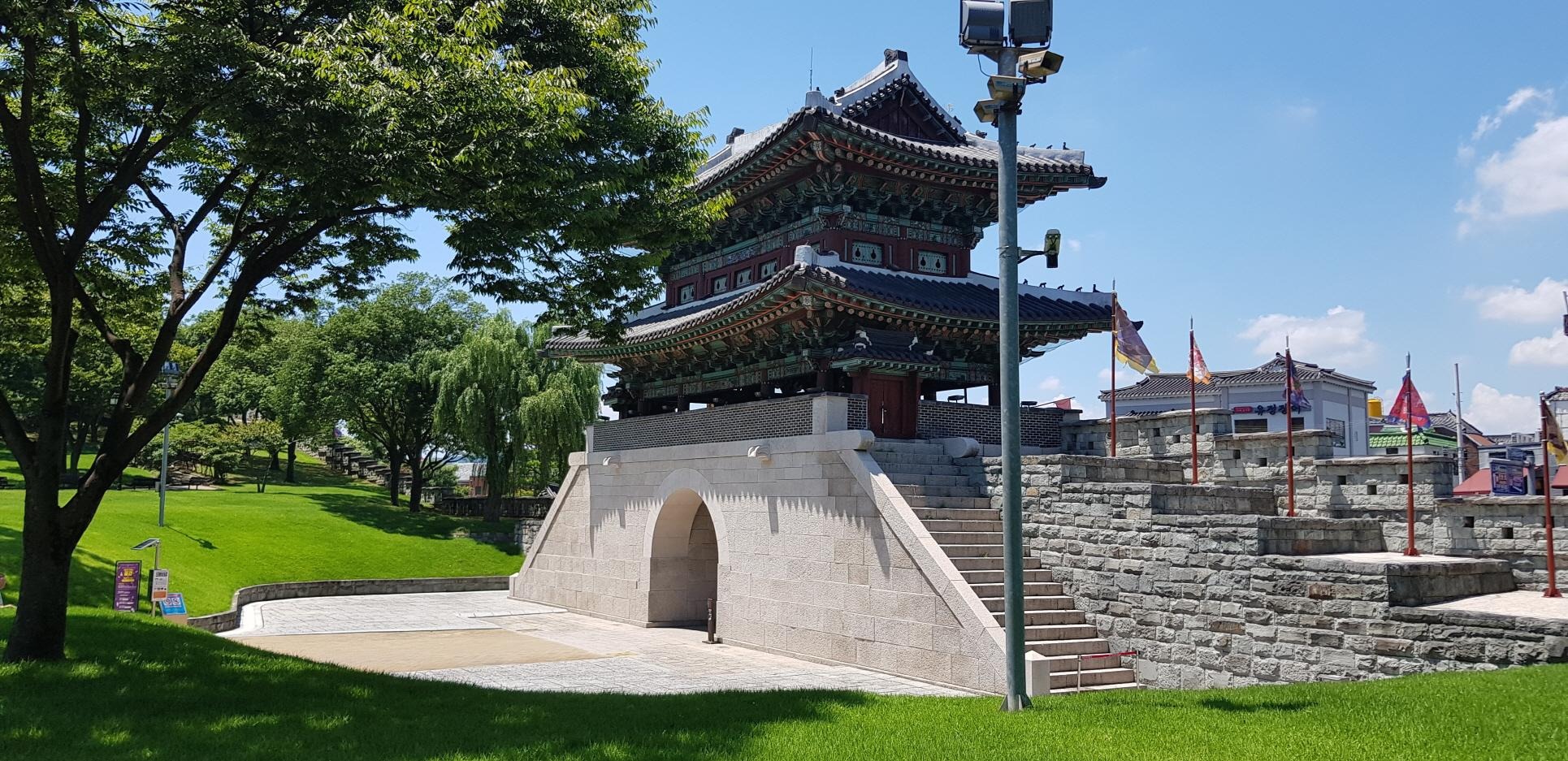목록100 Great Men Who Brightened Korea (60)
Korea & Brake
 5. King Gwanggaeto the great(Chungju Goguryeo Stele)_광개토대왕(충주 고구려비)
5. King Gwanggaeto the great(Chungju Goguryeo Stele)_광개토대왕(충주 고구려비)
Goguryeo was one of the ancient states of Korea that lasted about 700 years and was a powerful country with the widest territory in history. In general, the supremacy of East Asia was in the dynasties that had historically dominated the Chinese continent, and the surrounding nations could not help but be affected directly or indirectly. Therefore, it was a general power structure that only the u..
 29. Jinul(Donghwasa, Daegu)_지눌(대구 동화사)
29. Jinul(Donghwasa, Daegu)_지눌(대구 동화사)
Korea's representative religions are Christianity, Catholicism, and Buddhism. Buddhism is the oldest and most profound influences of Korean people's emotions and culture. The Jogye Order is the representative religious order of Korean Buddhism, which was introduced in the Three Kingdoms period and played an important role as the ruling ideology of the past nations and deeply rooted in the lives ..
 56~61. Six Martyred ministers(사육신)_ Yuksinsa & Myogol Village in Daegu(대구 육신사, 묘골마을)
56~61. Six Martyred ministers(사육신)_ Yuksinsa & Myogol Village in Daegu(대구 육신사, 묘골마을)
The industrial complex is located in the west of Daegu Metropolitan City. In the past, textile companies have been concentrated in this industrial complex, which is about half of all businesses, but now, machinery and metal industry are the main. When you go out from the center of Daegu and go to the west, the scenery of the rural area can be seen after the industrial complex and it is Dalseong-..
 99. Lee Sang(Lee Sang's House, Seochon in Seoul)_(이상의 집, 서촌)
99. Lee Sang(Lee Sang's House, Seochon in Seoul)_(이상의 집, 서촌)
Lee Sang is a representative modern Korean writer during the Japanese colonial period. Born in 1910, died in 1937. He was born in the same year as the Korean-Japanese annexation and died before the independence, so he was a person who lived only the Japanese colonial period. At the age of 3, he left his parents' and grew up in his uncle's house at Tongin-dong. Many articles left in his short lif..
 96~97. Lee Su-il and Shim Sun-ae(The museum of Korean modern literature, Incheon)_한국근대문학관(이수일과 심순애, 인천)
96~97. Lee Su-il and Shim Sun-ae(The museum of Korean modern literature, Incheon)_한국근대문학관(이수일과 심순애, 인천)
Lee Su-il and Shim Sun-ae are not the real figures but the main characters of the popular novel 'Jang Han Mong' during the Japanese colonial period. Jang Han Mong is a full-length novel that was published serially in the newspaper ‘Maeil Shinbo’ from 1913 to 1915, and gained tremendous popularity in that period. It was also put on the stage before the end of the series, and it was also made into..
 93. Yu Gwan-sun(Historic site, Cheonan)_유관순 열사 유적지(천안)
93. Yu Gwan-sun(Historic site, Cheonan)_유관순 열사 유적지(천안)
The shout of the 3.1 movement that began at Tapgol Park soon spread throughout the Republic of Korea. It was the wave of nation that at least 500,000 people participated in the anti-imperialist movement by April 30. Some said that the voices of the people of a powerless nation are empty, but I think it had a great significance in that they informed the voices of people aspiring to independence g..
 92. Son Byong-hee(Tapgol Park, Seoul)_ 손병희(탑골공원, 서울)
92. Son Byong-hee(Tapgol Park, Seoul)_ 손병희(탑골공원, 서울)
Topgol Park is the first urban park in Korea located near the last point of Insadong Street. It is the meaningful space in which the 3.1 independence movement took place in 1919 firstly. Son Byong-hee, who was the leader of the Korean traditional religion named Cheondogyo, led the recitation of the Declaration of Independence by 33 national leaders at Taehwagwan and the 3.1 independence movement..
 91. Ji Seokyeong(Memorial Stone & Cable car, Busan)_ 지석영 공덕비 & 케이블 카(부산)
91. Ji Seokyeong(Memorial Stone & Cable car, Busan)_ 지석영 공덕비 & 케이블 카(부산)
The smallpox that disappeared from the world now was the object of fear only a few decades ago. It is highly contagious and the mortality rate is over 30%, so it caused severe damage to people. Jeong Yak Yong, one of the 100 great men, was also almost killed by smallpox when he was a child, and half of his children have died by this disease. Since the 17th century, when the British physician Edw..
 89. Lee Wan-yong(Thehwagwan, Seoul)_이완용(태화관, 서울)
89. Lee Wan-yong(Thehwagwan, Seoul)_이완용(태화관, 서울)
The 89th person among the 100 great men who brightened Korea is Lee Wan Yong. He is included in the 100 great people because of the lyrics of 'Ahn Jung - geun is patriotic Lee Wan Yong is unpatriotic ', but in fact Lee Wan Yong is the first person to think of a national rebel in the head of a Korean. The intention of the lyricist seems to be expressed by simplifying the direction of the life can..
 88. Ahn Jung geun(the museum of modern art,Gunsan)_안중근(군산 근대미술관)
88. Ahn Jung geun(the museum of modern art,Gunsan)_안중근(군산 근대미술관)
Ahn Jung - geun is the most famous person for Koreans among the independence activists active during Japanese colonial era. He killed Ito Hirobumi, who was the greatest chief of Japanese politics at that time and the 1st governor of the Joseon Dynasty, in Harbin, China 1909. Ahn Jung-geun showed resolute attitude until his death in March 1910 after being tried by a Japanese court, because of thi..
